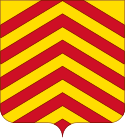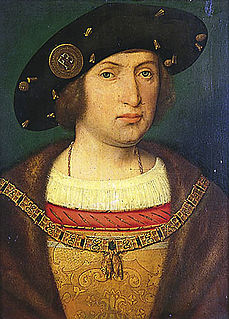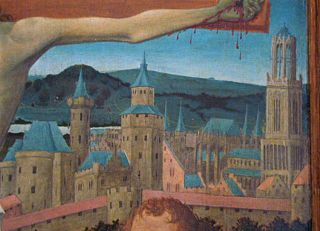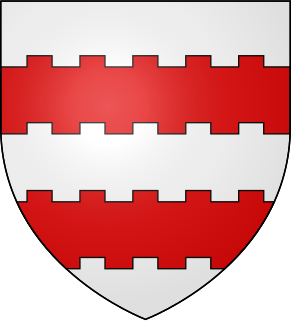This article does not cite any sources .(November 2012) (Learn how and when to remove this template message) |
| Frederik Egmond | |
|---|---|
Coat of arms | |
| Died | 1521 |
| Noble family | House of Egmond |
| Spouse(s) | Aleida of Culemborg, Walburga of Manderscheid |
| Father | William IV, Lord of Egmont |
| Mother | Walburga of Meurs |
Frederik of Egmont (ca. 1440–1521) was count of Buren and Leerdam, Lord of IJsselstein and councilor of Charles the Bold en Maximilian I.

The Buren County was a territory situated in what is now the Dutch province of Gelderland. It was an independent county until the establishment of the Batavian Republic in 1795. Although it was not formally part of the United Provinces, in practice it was governed by it.

Leerdam (Dutch: [leːrˈdɑm]; is a city and former municipality in the western Netherlands, in the province of Utrecht. The municipality was merged with the municipalities of Vianen and Zederik on January 1, 2019. The name of the new municipality is Vijfheerenlanden which is a part of the province Utrecht. The former municipality Leerdam was a part of the province South Holland.

IJsselstein is a municipality and a city in the Netherlands, in the province of Utrecht. IJsselstein received city rights in 1331. IJsselstein owes its name to the river Hollandse IJssel which flows through the city. It is a major commuting suburb for the Utrecht area, along with neighbouring towns Houten and Nieuwegein. It's surrounded by the municipalities of Utrecht, Montfoort, Lopik, Vianen and Nieuwegein.
Frederik was the second son of William II of Egmont and Walburga of Meurs. Together with his brothers, he participated in his father's campaign in the Duchy of Guelders. When Burgundy had conquered the Duchy, Frederik received some important functions there. In the 1480s he supported the policies of Maximilian I of Austria. He was present at Maximilian's coronation as Holy Roman Emperor in 1486, and led in 1488 an army against the city of Bruges that held Emperor Maximilian hostage.
The Holy Roman Emperor was the ruler of the Holy Roman Empire during the Middle Ages and the early modern period. The title was, almost without interruption, held in conjunction with title of King of Germany throughout the 12th to 18th centuries.

Bruges is the capital and largest city of the province of West Flanders in the Flemish Region of Belgium, in the northwest of the country.
In 1492, Maximilian gave him the titles of Count of Buren and Count of Leerdam. In 1499, he became a sworn member of the Illustrious Brotherhood of Our Blessed Lady in 's-Hertogenbosch.
The Illustrious Brotherhood of Our Blessed Lady was a religious confraternity founded in 1318 in 's-Hertogenbosch to promote the veneration of the Mother of God. The brotherhood was organized around a carved wooden image of the Virgin Mary in St John’s Cathedral in 's-Hertogenbosch. The Brotherhood had two types of members: ordinary members and sworn members, also called 'swan-brethren' because they used to donate a swan for the yearly banquet. Sworn members were clerics in principle; in fact they were often chosen among the nobility, the magistrates, etc. As a result, the Brotherhood also functioned as an important social network.

's-Hertogenbosch, colloquially known as Den Bosch, is a city and municipality in the Southern Netherlands with a population of 152,968. It is the capital of the province of North Brabant.














